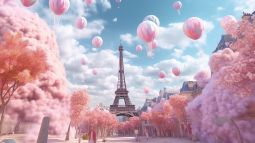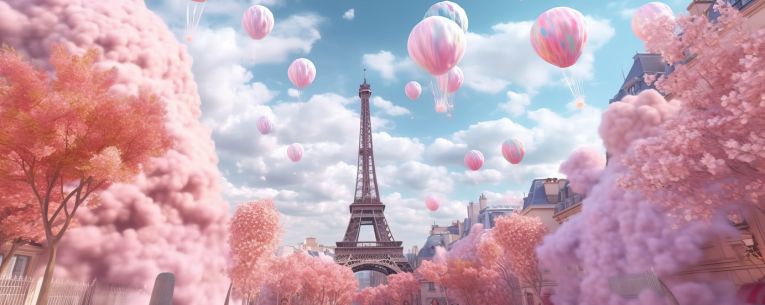You see a stunning picture of Silver Falls State Park in Oregon, where twin cascades plunge over a cliff as a rainbow arcs overhead.
That single photo inspires you to plan a trip to this magical place. You visit the park and hike its famous Trail of Ten Falls. Every waterfall is pretty, but none of them look like the picture you saw. There’s a simple reason: It was an AI-generated photo.
More and more, the images we see of the world’s wonders aren’t entirely authentic. Some travel photos are entirely fake, showing places that don’t even exist. And as AI-generated photography gets more sophisticated, it’s harder than you think to tell the difference.
How to identify AI-altered travel photos of places that actually exist
Oregon’s Crater Lake is an awe-inspiring sight. Formed by a volcanic eruption 7,700 years ago, this shimmering blue basin is the deepest lake in the U.S. A remnant cinder cone forms an island in the western end of the lake.1
It looks so perfect, who would want to try to use AI to improve on nature? Well... Oregon Life found a photo that almost looks real—except the island has been moved, and there are seagulls hovering in the sky. Gulls are one species you definitely won’t spot at Crater Lake.
When you’re planning a trip, how can you tell if a travel photo of a real place has been altered? Look for:
- Odd natural phenomena: Random rainbows. Overly dramatic clouds. Combinations of elements, such as a lightning strike against a fiery sunset. If it looks like a one-in-a-million shot, it’s probably fake.
- Super-saturated colors: AI travel photos often turn up the dial on every color: bright green trees, blinding turquoise seas.
- Uniformity: If every leaf on a tree or every rail on a wooden fence looks the same, it’s probably AI.
- Perfect symmetry: British travel blogger Ellie Green was “so excited to capture that iconic shot of Taipei 101 framed perfectly between two futuristic buildings. I’d seen it all over Instagram,” she said. When she got to Taipei, she realized ”that iconic shot" wasn't real; people had used editing software to create a mirror image.
- Blended or broken lines: “When pictures are AI-generated, lines tend to randomly blend together,” Yasmina Stitou, founder of AI-powered creative agency Casanegra, told Afar. “If you follow a specific line, chances are it will randomly disappear or blend inexplicably with another one.”2
Test yourself: Look at these images of Mount Fuji, the Hong Kong skyline, and the Northern Lights. Can you tell which one is real?
How to identify AI travel photos of places that don’t exist
Photographer Kyle Frost posted AI-generated landscapes to his Instagram for one week. “No one noticed,” he said.
Frost created a gallery of these images called “These Places Aren’t Real.” The AI landscapes are beautiful: mist rising from an alpine lake, an old stone ruin on a grassy hill, waves crashing against a cliff. They all look like places you’d love to travel to... but you can’t. Look closely and you’ll see strange textures in the trees’ leaves and a winding road that seems to veer off to nowhere.
Don’t feel bad if you can’t tell AI travel photos from real ones. “Social media has actually made it harder to identify what might be fake,” Frost said. “We’ve been exposed to so many incredible photographers visiting insane places around the world that we’ve become desensitized to incredible images.”
There are online tools you can use to determine if a specific photo is real, such as Is It AI? and AI or Not. Or, you can do a reverse image search. If a search engine is unable to suggest similar images, chances are it’s an AI travel photo. If the image is real, then there should be others like it from reputable sources, such as an official tourism site or a photographer’s portfolio.
How to identify friends’ and influencers’ fake travel photos
Have you ever wondered how your perpetually broke friend can afford to travel internationally six times a year? This month, she’s on the beach in Jamaica. Next month, she’s posting sunsets in Santorini. Or... is she?
Your friend may be using software that makes AI travel photos for you. The process is simple. First, you upload some photos of yourself from different angles. The AI program uses those to create a model of your face, then generates photos at famous places around the world. There you are at Machu Picchu. There you are in front of the Great Pyramids of Giza, with some unusually pretty camels posing behind you. There you are at the Taj Mahal.
How can you tell someone is using AI to fake their vacation photos? It’s all about context. Say they post a photo of themselves in Times Square, but there are no people around them—just a vague crowd in the distance. That’s unlikely to be a real photo. Or maybe someone shares an image of themselves on a sunny day at Stonehenge, standing close enough to touch the stones. Nope! If you’ve ever been there, you know that the public isn’t allowed to access the site’s inner circle except on special tours at sunrise and sunset.3
Another clue: Is the person only posting photos of themselves at famous landmarks? True world travelers tend to take more candid and creative photos of the hidden gems they discover while abroad.
How to identify AI-generated hotel and vacation rental photos
You chose your vacation rental because of the gorgeous photos in the listing. It offers a ton of space, beautiful design, and a breathtaking bay view from the balcony. When you arrive, it’s not at all what you expected. The furniture is stained. The rooms are cramped. And the balcony looks out onto a boring suburb. What happened?
The listing photos may have been enhanced by AI. It’s all too common a practice. When you’re booking a rental, zoom in on the photos to see if anything looks amiss. You might see:
- Furniture that’s oddly placed, or missing parts
- Weird folds in textiles
- Things that are missing, like a balcony without a railing
The best-case scenario: The host just wanted the listing to look better than it is. The worst-case scenario: The listing itself is imaginary, and it’s bait for a vacation rental scam.
Bonus: 5 destinations that are even better than AI can imagine
Yes, AI travel photos can warp our expectations and try to steal our sense of wonder. But don’t be dismayed! The world is full of destinations so unusual and beautiful you might think they’re fake—but they’re not. Here are just a few examples:
- Cappadocia, Turkey: Imagine hot air balloons sailing over strange, towering rock formations and ancient cliff dwellings. It looks like a magical realm in a children’s book, but it’s real.
- Hierve el Agua, Oaxaca, Mexico: An azure pool sits atop white travertine formations that look exactly like a petrified waterfall.
- Avenue of the Baobabs, Madagascar: Ancient, enormous trees tower over a dirt road.
- Antelope Canyon, Arizona: Explore sculpted sandstone slot canyons on the land of the Navajo Nation.
- New River Gorge National Park and Preserve, West Virginia: The park’s signature bridge is a favorite target of AI image manipulators (just ask the park rangers). The real-life version is awe-inspiring.
In a world full of travel fakes and scams, there’s one thing you can rely on: Allianz Travel Insurance. Find out why more than 70 million American travelers trust us to protect them on the journey: Get a quote.
Related Articles








Share this Page